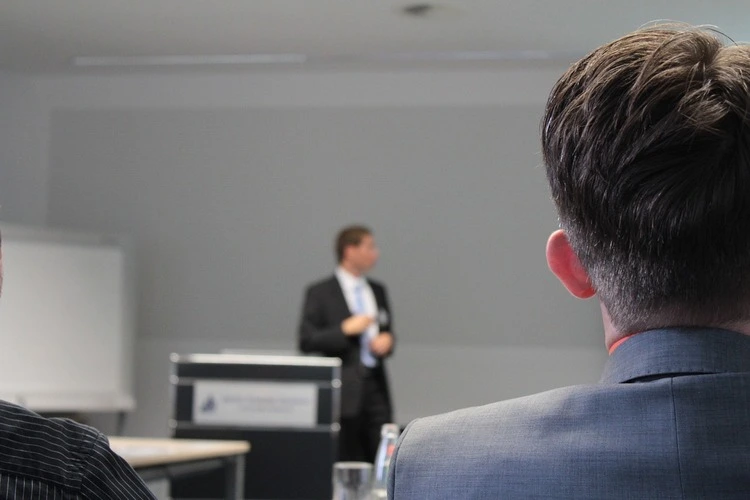Bouncing Back from Burnout: Navigating Change Fatigue in Today’s Agile Organizations
In the modern fast-paced business environment, organizations often undergo frequent changes to stay competitive. However, this relentless pace can lead to Change Fatigue, a state of exhaustion and disengagement experienced by individuals who are faced with constant alterations in their work settings. The phenomenon is not only detrimental to employee well-being but also hampers organizational productivity and adaptability.
The importance of addressing Change Fatigue lies in its potential to undermine an organization’s overall effectiveness in achieving its strategic goals. When left unmanaged, it can create a disconnect between the workforce and the organizational objectives, thereby diminishing the intended benefits of change initiatives. By understanding and tackling Change Fatigue, organizations can better balance the need for agility with the imperative of maintaining a motivated and engaged workforce.
Recognizing Change Fatigue

Recognizing Change Fatigue early is pivotal for organizations aiming to maintain a healthy, productive work environment amidst constant changes. The signs and symptoms can manifest as physical and emotional exhaustion, decreased engagement, and a growing resistance to new initiatives. Employees may exhibit a sense of loss or grief over previous work conditions or processes, coupled with a reluctance to adopt new practices.
Utilizing assessment tools and methodologies, like employee surveys or focus groups, can help in gauging the extent of change fatigue within a team or the broader organization. Real-world examples and case studies can provide valuable insights into the manifestations of change fatigue, offering a tangible understanding of its impacts and the importance of timely recognition.
An integral part of recognizing Change Fatigue is understanding its prevalence across different organizational structures and cultures. Real-world examples and case studies serve as a mirror to reflect the commonality of this issue and its repercussions. These narrative accounts, when shared within an organizational context, can also act as a catalyst for opening dialogues about the experiences and challenges faced by employees.
A proactive approach to recognizing Change Fatigue, coupled with an open discussion culture, lays a strong foundation for addressing the issue and fostering a supportive environment conducive to positive change and growth.
Underlying Causes of Change Fatigue
The underlying causes of Change Fatigue are often rooted in the rapid pace at which organizations initiate changes to stay ahead in a competitive market. A high frequency of changes, be it in processes, tools, or organizational structures, can overwhelm employees, making it challenging for them to adapt swiftly.
Poor communication exacerbates the issue, as employees may feel left in the dark about the rationale behind changes or how they are expected to adjust. The lack of clear, transparent communication can breed uncertainty and anxiety, which further feeds into the cycle of Change Fatigue.
Additionally, when employees perceive a lack of involvement or control over the changes occurring around them, it can lead to a sense of helplessness and decreased morale, making the transition process even more strenuous.
The lack of employee involvement in decision-making processes concerning changes significantly contributes to Change Fatigue. When changes are imposed without adequate explanation or without providing a platform for employee feedback, individuals may feel disregarded or undervalued. This lack of inclusivity not only triggers resistance but also diminishes the likelihood of successful change implementation.
Understanding these underlying causes is crucial for organizations to devise strategies that are not merely focused on the change itself, but also considerate of the human aspect, ensuring a smoother transition and a more accepting organizational culture. Addressing these causes head-on with empathetic leadership and inclusive communication strategies can significantly alleviate Change Fatigue and pave the way for successful organizational evolution.
Consequences of Ignoring Change Fatigue
Ignoring Change Fatigue can have far-reaching consequences on both individual and organizational levels. At the core, decreased productivity and engagement are prominent indicators of a workforce grappling with change fatigue. As employees struggle to keep up with constant changes, their ability to focus and perform optimally dwindles.
The continuous cycle of adapting to new processes or technologies can drain their energy, leading to a decline in overall productivity. Moreover, engagement wanes as employees may start to feel disconnected or unsupported, potentially leading to a higher turnover rate which, in the long term, can be costly and disruptive for the organization.
Furthermore, the erosion of trust and morale can be particularly damaging. When change is poorly managed or communicated, skepticism towards leadership can develop, creating a divide between employees and management. This disconnect can result in a communication breakdown, where crucial information may be lost or misinterpreted, exacerbating the challenges associated with implementing change.
The ripple effect of such a communication breakdown can extend to client relationships and the broader reputation of the organization. Addressing Change Fatigue is not merely a matter of enhancing the work experience for employees; it’s a critical step towards preserving the integrity, cohesiveness, and success of the organization in a dynamic business landscape.
Leadership’s Role in Addressing Change Fatigue
Leadership plays a crucial role in addressing and alleviating Change Fatigue within an organization. Leading with empathy and understanding is paramount, as it demonstrates a genuine concern for the well-being and experiences of employees amidst ongoing changes. Effective leaders recognize the human element in organizational transitions and strive to create a supportive environment.
They are not only adept at communicating the rationale behind changes clearly and consistently but also open to receiving feedback, which fosters a two-way communication channel. Being a role model for resilience and adaptation is another critical aspect of leadership. When leaders exhibit a positive attitude towards change and demonstrate adaptability, it sets a tone that can significantly influence the organizational culture.
Creating a culture of openness and support is a hallmark of effective leadership in navigating Change Fatigue. A culture that encourages open discussions about changes, the challenges they present, and how they are impacting the team can lead to better understanding and collaboration. Moreover, providing necessary resources, training, and support helps employees to better cope with and adapt to changes, reducing the onset of Change Fatigue.
By instilling a sense of inclusivity and ensuring that employees feel valued and heard, leaders can significantly mitigate the negative effects of Change Fatigue. This proactive approach not only enhances the overall change management process but also contributes to building a resilient and engaged workforce capable of navigating the complexities of today’s agile business environment.
Team Building Activities to Alleviate Change Fatigue
In mitigating Change Fatigue, team building activities serve as a rejuvenating bridge between individuals and the organization’s evolving dynamics. Off-site team-building retreats can provide a fresh environment for employees to unwind, reflect, and foster stronger bonds with their colleagues.
Regular team debriefing and feedback sessions allow for an open exchange of experiences and insights, promoting a shared understanding of the change process and its impacts. Engaging the team in problem-solving and innovation workshops can also stimulate creativity and a sense of collective accomplishment, making the adaptation to change a more enriching experience. Introducing mindfulness and stress reduction programs can offer tools for managing stress and promoting mental well-being amidst the flux of organizational changes.
Lastly, recognition and appreciation ceremonies are vital in celebrating achievements and milestones, no matter how small, which can boost morale and provide a sense of purpose and progress. Through these team-building activities, organizations can foster a supportive and collaborative culture, reducing the strain of Change Fatigue and enhancing the overall resilience and adaptability of their teams.
Conclusion
Navigating Change Fatigue is crucial for maintaining organizational agility and employee well-being. By adopting empathetic leadership and engaging in team-building activities, organizations can foster a resilient culture. As leaders prioritize employee well-being amidst change, they not only enhance engagement but also drive the organization closer to its strategic goals, ensuring a vibrant and adaptive work environment in the face of ongoing change.






